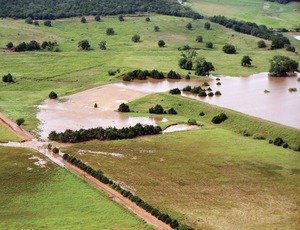
Beginning in the late 1950s and for the next 20 years, the U.S. built an average of one dam a day under the Watershed Protection Act of 1954. Most have a 50-year design life. Soon, those dams will start reaching the end of their design lives—also at the rate of one dam a day—for the next two decades.
The clock is ticking.
Flood-control system managers—such as the Natural Resources Conservation Service, which represents local sponsors of federally supported flood-control projects—are watching closely, but they also are confident in a new flood monitoring and warning system called DamWatch.
The system has been in pilot tests in Oklahoma for the past two years. In the first weeks of June and after a long drought, DamWatch got a major test when the state got its biggest floods in several years. The NRCS says it performed well.
"This is a big deal for the NRCS," says Jason Weller, the group's acting chief. He says the NRCS is so confident about DamWatch, a product and service of USEngineering Solutions, Hartford, Conn., it is deploying it nationwide and plans to take the system live by September. "It will allow us to monitor all 11,800 [watershed] dams from one location in real time," says Noller Herbert, NRCS director of engineering.
DamWatch aggregates real-time data from weather and hydrologic sources, meters, gauges and other sensing devices. Then, the information is compared to calculated alert levels in the watershed dams' databases. When sensors report waters are approaching dangerous levels for any particular facility, the system sends alerts to the responsible engineers and dam sponsors via text and email. DamWatch also stores as-built data, repair-work records and reports for every watershed structure. The information is accessible by any mobile device and can be updated from the field.



Post a comment to this article
Report Abusive Comment